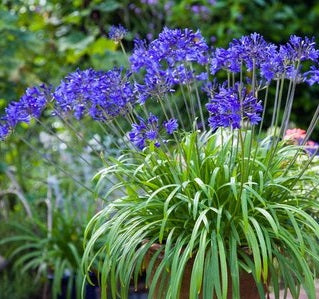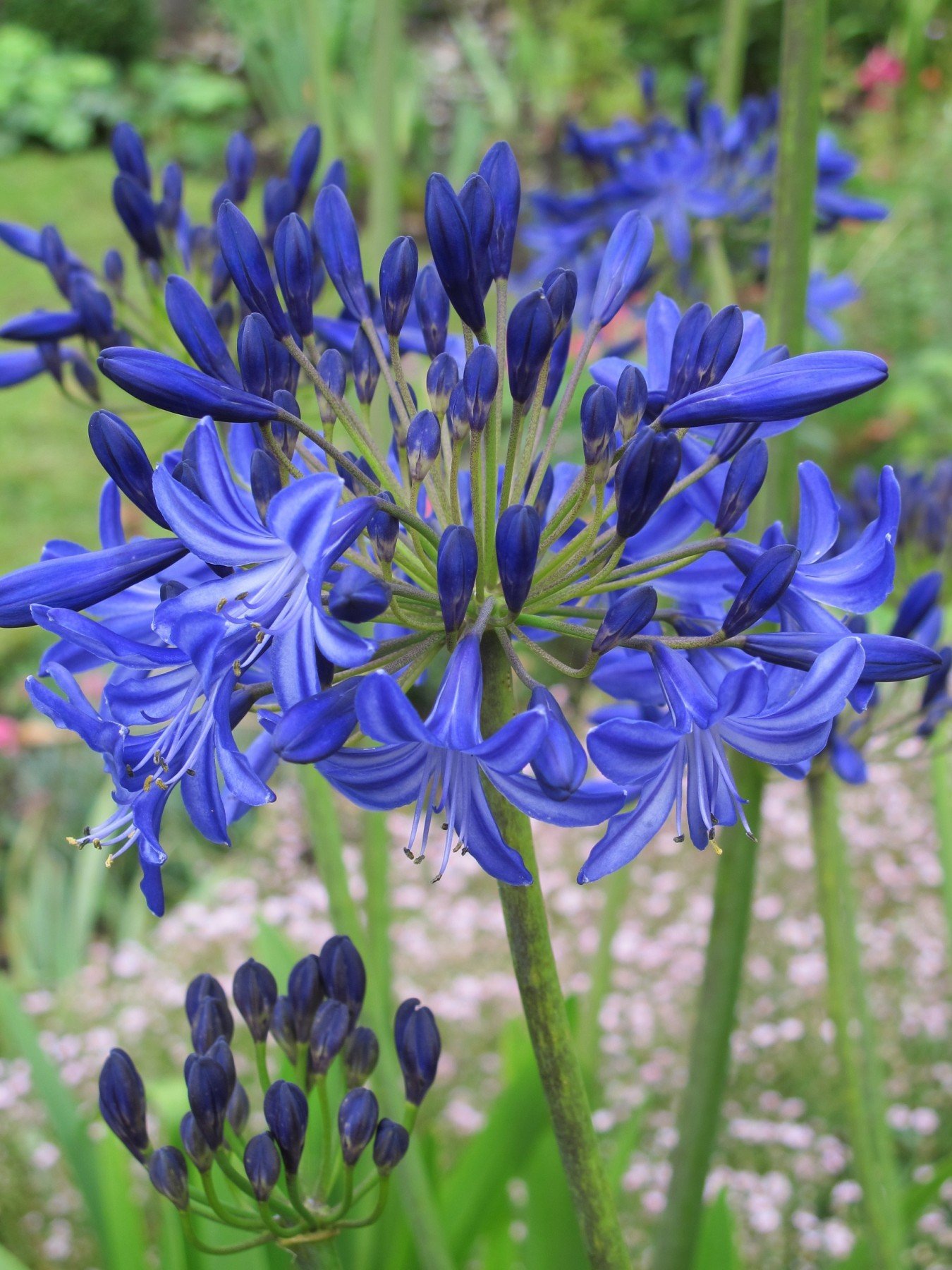Agapanthus Varieties: Choosing the Best for Your Landscape
Agapanthus Varieties: Choosing the Best for Your Landscape
Blog Article
Grasping the Art of Agapanthus Care: Important Actions for Healthy And Balanced Development and Vivid Flowers
In the world of cultivation, the growing of agapanthus stands as a rewarding undertaking for those that look for to nurture these elegant flowering plants. From picking the appropriate selection to grasping pruning techniques, the trip in the direction of cultivating prospering agapanthus plants is complex and holds the crucial to unlocking the full possibility of these botanical gems.

Picking the Right Agapanthus Variety

When choosing the right Agapanthus range for your yard, take into consideration elements such as climate viability, bloom color, and growth routine. Agapanthus, commonly known as Lily of the Nile or African lily, is available in a range of colors ranging from shades of purple and blue to white. Select a blossom color that enhances your existing garden palette to create a harmonious landscape. Additionally, take into consideration the climate in your region to ensure the Agapanthus range you pick can thrive in your specific problems. Some ranges are more tolerant of chilly temperature levels, while others favor warmer environments. Understanding the growth practice of various Agapanthus varieties is vital for correct positioning within your garden. Some varieties have a clumping growth practice, perfect for boundaries or containers, while others have a more dispersing nature, suitable for ground cover or mass growings. By meticulously assessing these elements, you can choose the excellent Agapanthus selection to enhance the appeal of your garden.
Suitable Planting Problems
Taking into consideration the optimum ecological requirements is essential for effective Agapanthus farming. Agapanthus plants are sensitive to chilly temperature levels and should be shielded from frost throughout wintertime months.
To guarantee healthy growth and vibrant flowers, plant Agapanthus light bulbs at a depth of about 2-4 inches and space them 8-12 inches apart. Mulching around the base of the plants helps maintain dampness and reduces weed growth.
Watering and Feeding Tips
Keeping proper moisture levels and supplying crucial nutrients are key elements in the care regimen for Agapanthus plants. When it pertains to watering Agapanthus, it is critical to strike a balance. These plants favor continually wet dirt but are at risk to root rot if overwatered. Throughout the expanding period, water deeply as soon as a week, making certain the dirt is well-draining to protect against waterlogging. In hotter environments or throughout durations of drought, more constant watering may be essential to keep the soil evenly moist. Nevertheless, reduce watering in the winter months to stop waterlogged conditions.
Feeding Agapanthus is important for advertising healthy development and prolific blossoms. Use a well balanced plant food, such as a 10-10-10 formula, in the very early springtime as brand-new growth emerges. By adhering to these watering and feeding ideas, you can guarantee your Agapanthus plants thrive and generate dynamic, durable flowers.
Trimming Strategies for Agapanthus
Trimming Agapanthus plants at the suitable times and with correct techniques is essential for keeping their wellness and advertising optimal development and blooming. The ideal time to prune Agapanthus remains in late winter months or very early springtime prior to new growth arises. Begin by eliminating any dead or yellowing leaves near the base of the plant. Cut them as short as feasible without damaging the arising shoots.
For flowered stems, wait till the blooms have withered and then trim them back to the base. This not just cleans up the plant's appearance however likewise encourages the growth of new flower buds. Deadheading spent flowers can likewise reroute the plant's power right into creating more flowers as opposed to establishing seeds. Nonetheless, if you wish to gather seeds for proliferation, leave some flowers to dry and mature on the plant.
Keep in mind to utilize clean, sharp tools to make precise cuts and minimize the threat of introducing illness. Agapanthus. Normal trimming will assist keep your Agapanthus looking neat and healthy while guaranteeing a plentiful screen of lovely blooms
Dealing With Usual Parasites and Diseases
After ensuring correct pruning strategies for Agapanthus, it is vital to attend to common insects and conditions that can impact the health and wellness and vigor of these plants. Agapanthus plants are usually sturdy but can still succumb particular problems. One usual pest that impacts Agapanthus is the Agapanthus gall midget. This small, orange fly lays its eggs in the foliage, bring about distorted development and blossom buds that fall short to open up. To combat this insect, trim and damage any type of affected plant components and consider utilizing insecticidal soap.
An additional typical concern is fungal leaf spot, which presents as dark lesions on the fallen leaves. To stop fungal diseases, make certain good air flow around the plants, avoid overhanging watering, and get rid of any infected fallen leaves without delay. Additionally, Agapanthus plants can endure from origin rot great site if they are planted in badly draining dirt. To stop this, plant Agapanthus in well-draining dirt and avoid overwatering. By being watchful and taking timely activity against bugs and diseases, you can aid your Agapanthus plants thrive and generate dynamic blooms.

Verdict
Finally, mastering the art of agapanthus care includes picking the best variety, providing excellent growing problems, proper watering and feeding, suitable pruning techniques, and dealing with common pests and diseases. By complying with these vital actions, you can ensure healthy and balanced growth and dynamic blooms for your agapanthus go plants. Keep in mind to regularly monitor and keep your plants to promote their general wellness and durability.
To guarantee healthy and balanced development and vibrant flowers, plant Agapanthus light bulbs at a deepness of concerning 2-4 inches and space them 8-12 inches apart. By following these watering and fertilizing pointers, you read this article can guarantee your Agapanthus plants thrive and generate vivid, resilient blossoms.
One typical insect that impacts Agapanthus is the Agapanthus gall midget. In addition, Agapanthus plants can endure from root rot if they are grown in improperly draining soil. By following these necessary steps, you can ensure healthy growth and lively flowers for your agapanthus plants.
Report this page